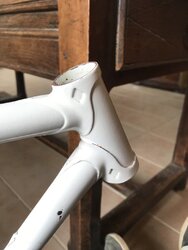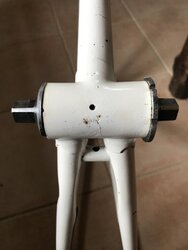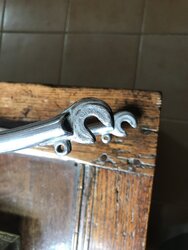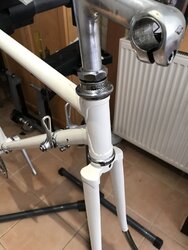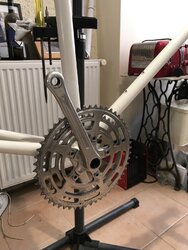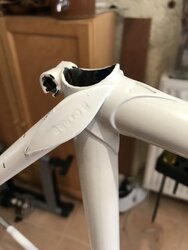woodbutchmaster
Veteran
I am starting work on this 1970's frame and it has been pointed out to me that there are two non standard holes in the dropouts.
I have no idea why that was done but l'm not keen on it. Whats the verdict, live with it or fill them somehow ?

I have no idea why that was done but l'm not keen on it. Whats the verdict, live with it or fill them somehow ?

